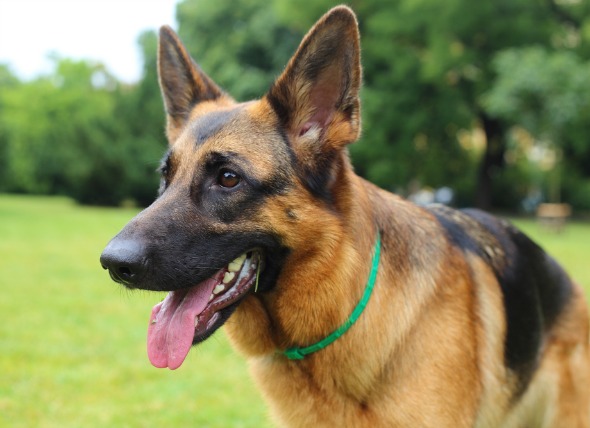

Status epilepticus, or epilepsy, is a neurological condition that results in recurrent seizures in dogs.
There are several different types of seizures or epilepsy that can affect dogs.
The more seizures a dog has, the more likely there is to be damage among the neurons in the brain, and the more likely the animal is to seize again. Researchers generally classify all seizures as focal seizures, generalized seizures, and focal seizures with secondary generalization.
A focal seizure will affect only a small part of the brain. Generalized seizures tend to affect both sides of the brain.
Signs of an impending seizure may include a period of warning, where a patient will experience what is called an aura. During this time a dog may appear worried, stressed, or frightened. It may experience visual disturbances or seek help from its owner. The dog may experience contractions in its limbs or in its muscles, and may have difficulty controlling urination and bowel movements.
The dog may also experience an altered mental status before progressing to a seizure, as well as develop other neurological symptoms.
Many different factors, including the pattern of seizures, can influence the development of future seizures. For example, how old a dog is when it first develops a seizure may determine the likelihood that it will develop future seizures, reoccurring seizures, and the frequency and outcome of those seizures.
Physical symptoms may include tachycardia, muscle contractions, difficulty with breathing, low blood pressure, weak pulse, fainting, swelling in the brain, and obvious seizures. Some dogs will exhibit mental behaviors that are out of the ordinary, including symptoms of obsessive and compulsive behaviors. Some will demonstrate shaking and twitching. Others may tremble. Still others may die.
Laboratory and biochemical tests may reveal the following:
In some cases certain medical procedures, including surgery to remove tumors that may contribute to seizures, may be needed. Drugs may help reduce the frequency of seizures for some animals. Some corticosteroid medications, anti-epileptic, and anti-convulsant medications may also help to reduce the frequency of seizures. The type of medications given will depend on the type of epilepsy the animal has, as well as other underlying health conditions the animal has.
For example, steroids are not recommended for animals with infectious diseases, as they can have an adverse effect.
Early treatment and proper care are vital to a dog’s general health and wellness. Younger dogs are more at risk for severe forms of certain types of epilepsy, including primary and idiopathic epilepsy. Make sure you take your dog to the veterinarian early if you suspect it may be at risk for this, or any other type of disease. Together, you and your veterinarian can determine the best possible course of action for your dog.
 Kidney Failure (Long-Term) in Dogs
Chronic Renal Failure in Dogs
Nine in ever
Kidney Failure (Long-Term) in Dogs
Chronic Renal Failure in Dogs
Nine in ever
 Tumor of the Eye in Dogs
Uveal Melanoma in Dogs
The uvea is the part of th
Tumor of the Eye in Dogs
Uveal Melanoma in Dogs
The uvea is the part of th
 Postpartum Low Blood Calcium in Dogs
Postpartum Eclampsia in Dogs
Eclampsia is a defic
Postpartum Low Blood Calcium in Dogs
Postpartum Eclampsia in Dogs
Eclampsia is a defic
 Parasite Drug (Ivermectin) Poisoning in Dogs
Ivermectin Toxicity in Dogs
This toxic reaction o
Parasite Drug (Ivermectin) Poisoning in Dogs
Ivermectin Toxicity in Dogs
This toxic reaction o
 Demodectic Mange in Dogs
Demodicosis in Dogs
Mange (demodicosis) is
Demodectic Mange in Dogs
Demodicosis in Dogs
Mange (demodicosis) is
Copyright © 2005-2016 Pet Information All Rights Reserved
Contact us: www162date@outlook.com